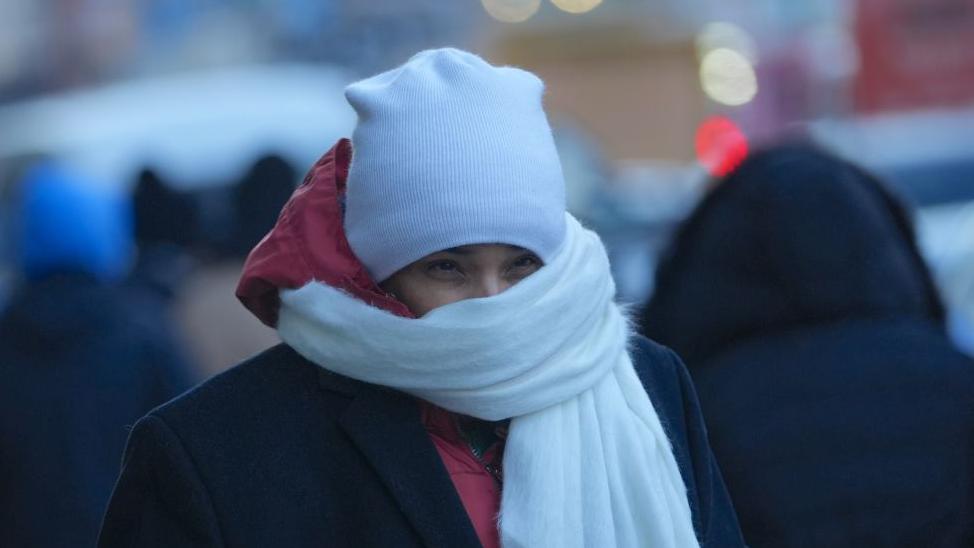Polar Vortex Brings Exceptionally Cold Temperatures to Eastern U.S.
A powerful polar vortex is expected to plunge the eastern United States into a deep freeze this January, potentially marking the coldest January since 2014. Meteorologists warn of a significant drop in temperatures, posing challenges for residents and authorities alike.
What is a Polar Vortex?
The polar vortex is a large area of low pressure and cold air surrounding the Earth’s poles. Occasionally, this mass of cold air can weaken and move southward, bringing frigid temperatures to regions like the eastern U.S., as it is doing this January.
Coldest January in Over a Decade
Forecasters predict that this cold spell could result in the coldest January since 2014. Temperatures are expected to dip well below freezing across much of the eastern U.S., with some areas experiencing record-breaking lows.
Regions Most Affected
The polar vortex is expected to impact states from the Midwest to the East Coast, including Illinois, Ohio, Pennsylvania, and New York. Coastal cities like Boston, Philadelphia, and New York City are also bracing for extreme cold, with temperatures plummeting to single digits.
Snow and Ice Hazards
Along with the freezing temperatures, the polar vortex is likely to bring snow and ice, creating hazardous travel conditions. Residents are advised to prepare for potential disruptions in transportation and power outages caused by heavy snowfall and icy roads.
Health Risks of Extreme Cold
Meteorologists and health officials are warning of the dangers associated with the severe cold. Frostbite and hypothermia are significant risks, particularly for those exposed to the elements without adequate protection. Vulnerable populations, including the elderly and homeless, are especially at risk.
Schools and Workplaces Prepare for Closures
Many schools and businesses in affected areas are preparing for potential closures as the cold wave intensifies. Officials are closely monitoring conditions to ensure the safety of students and workers during the extreme weather.
Energy Demand Surges
The cold snap is expected to drive up energy demand as residents rely heavily on heating systems. Utility companies are preparing for increased strain on power grids, urging customers to conserve energy where possible to avoid outages.
Impact on Agriculture and Livestock
Farmers in the region are taking precautions to protect crops and livestock from the extreme cold. Prolonged exposure to freezing temperatures can damage winter crops and pose risks to animals, impacting the agricultural sector.
Emergency Services on High Alert
Emergency services are on high alert to respond to cold-related incidents, including accidents on icy roads and medical emergencies caused by exposure. Authorities are urging residents to exercise caution and stay indoors whenever possible.
Community Shelters for Vulnerable Populations
Cities across the eastern U.S. are opening warming shelters to provide refuge for homeless individuals and those without adequate heating. Community organizations are working to distribute warm clothing and supplies to those in need.
Travel Disruptions Expected
The extreme weather is likely to disrupt air and rail travel, with delays and cancellations expected due to icy conditions and poor visibility. Travelers are advised to check with airlines and transportation providers for updates.
Climate Change and Weather Extremes
While cold waves are a natural phenomenon, experts point to the potential influence of climate change on the intensity and frequency of such events. The polar vortex’s southward shift could be linked to disruptions in global weather patterns caused by a warming planet.
Preparation Tips for Residents
Authorities are urging residents to prepare for the cold wave by stocking up on essentials, insulating homes, and ensuring heating systems are in good working condition. Pets should also be brought indoors to protect them from the cold.
Conclusion: A Historic Cold Spell Looms
The polar vortex’s arrival in the eastern U.S. is set to bring a historic cold spell, with temperatures plunging to levels not seen in over a decade. As communities brace for the challenges ahead, the focus remains on safety, resilience, and preparedness during this exceptional weather event.


































